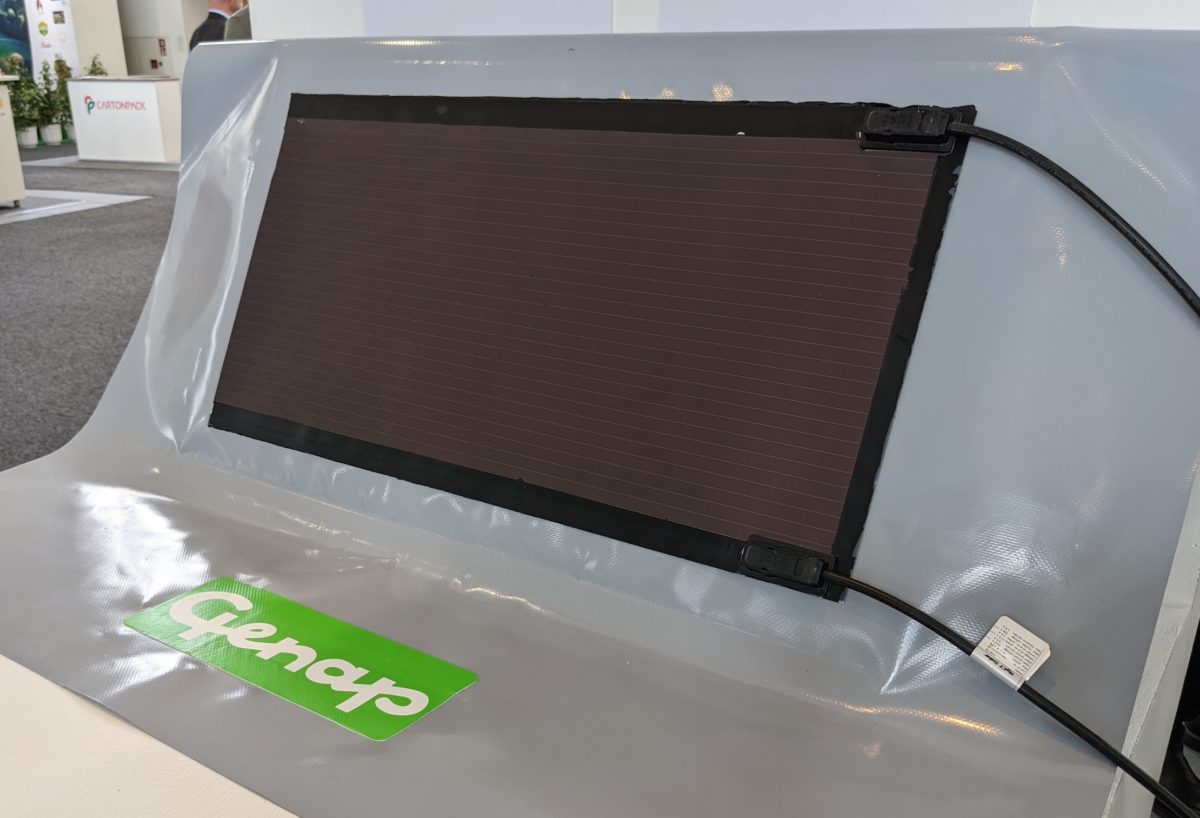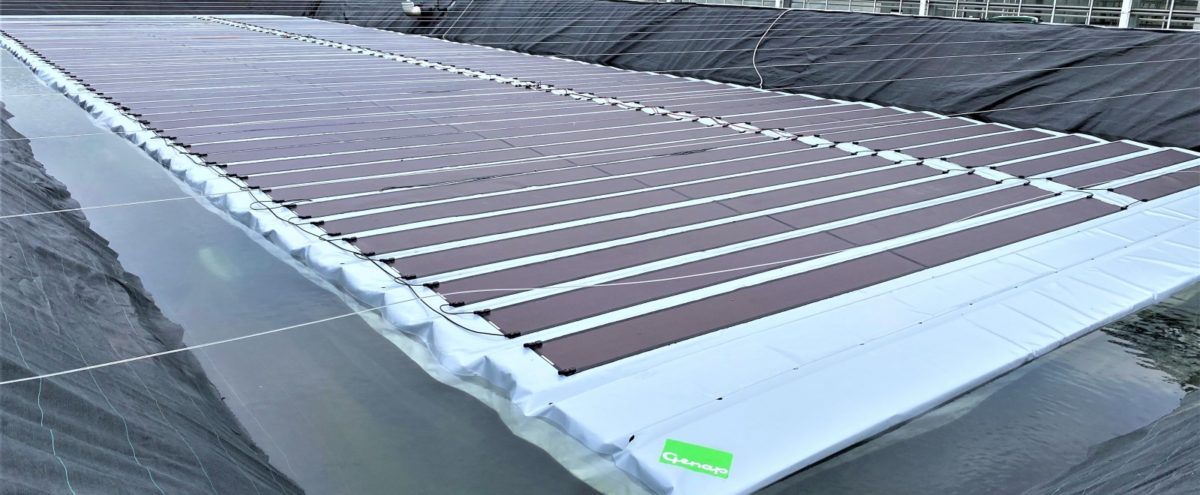Floating PV has added meaningful generation to water bodies at large scales. Now a new, lightweight solution built on closed water covers can bring solar generation for C&I producers with water reservoirs.
Genap is a 70-year old company – based in Arnhem, the Netherlands – that specializes in membrane solutions for water storage in agriculture. It showed off its Genap Energy Cover this week at the Fruit Logistica trade fair in Berlin. It works with fellow Arnhem-based flexible PV manufacturer HyET Solar to glue thin-film flexible panels to the membrane.
The modules in use are HyET Solar PowerFoil 115 modules, made to custom lengths for the cover. Each module is glued in place. Lightweight styrofoam is placed between the module and cover to act as a float.
Chrétien Hendriks, business development manager for Genap, told pv magazine that the idea came from the lack of available land and the efficiency benefits of lower operating temperatures for solar on water.
“Right now the payback period is around eight years, with the aim to get it down to five to six. But the normal covers we sell have a warranty of 15 years,” said Hendriks. “We're also looking at ways to remove already-glued modules to reuse them on new covers.”

The company’s novel use of membranes and thin-film solar secured a finalist position in Fruit Logistica’s Innovation Awards for 2022. Curiously competing with an onion that doesn't cause tears, a cauliflower with an edible stem, a new type of tomato, and other food innovations, the Genap Energy Cover offers tangible benefits for land-scarce locations, while adding conventional anti-algae and evaporation prevention.
Popular content
Initially, the target market is local, focusing on water storage for agricultural and floristry greenhouses in the Netherlands. A pilot was placed on a reservoir at Wageningen University and Research in Bleiswijk in September 2021. The facility is approximately sized at 35 meters by 12 meters, with the overall output at 12kWp.
Hendriks said increasing the yield is a key goal. “The first generation of these panels in the test setup was around 60W/m2, rising to 120W/m2 in a year from now. And at the end, we’re aiming for around 165W/m2. It’s our first design and we think we can optimize and increase the percentage of the [membrane] that is covered in PV quite a bit higher – we’d like to go to a 90% coverage of the full floater.”
Genap expects to release the Energy Cover in the third quarter of 2022. Hendriks claimed that the capital cost of Genap's floating, flexible PV solution is “less than half as expensive as other floating PV solutions currently available.” Maintenance is simplified with the retractable plastic-foil cover, without the heavy infrastructure of fixed panels, he said. No soiling issues have been noted, as there are cables to deter birds.
Hendriks also noted that a rooftop setup is also being explored with High yield Energy Technologies (HyET) Group, recently majority acquired by Australian-based Fortescue Future Industies. HyET is helping with weight-constrained rooftops that are unable to support the heavy structures of fixed modules.
“We're doing an innovation at the moment with HyET Solar, which is their modules glued onto our foils, with cables already integrated,” said Hendriks. “We’ll tension them and the membrane onto existing roofs, for rooftops that cannot have too much weight for conventional frame structures and glass panels. It's a lightweight roofing solution we're working on.”
This content is protected by copyright and may not be reused. If you want to cooperate with us and would like to reuse some of our content, please contact: editors@pv-magazine.com.



2 comments
By submitting this form you agree to pv magazine using your data for the purposes of publishing your comment.
Your personal data will only be disclosed or otherwise transmitted to third parties for the purposes of spam filtering or if this is necessary for technical maintenance of the website. Any other transfer to third parties will not take place unless this is justified on the basis of applicable data protection regulations or if pv magazine is legally obliged to do so.
You may revoke this consent at any time with effect for the future, in which case your personal data will be deleted immediately. Otherwise, your data will be deleted if pv magazine has processed your request or the purpose of data storage is fulfilled.
Further information on data privacy can be found in our Data Protection Policy.